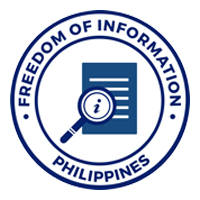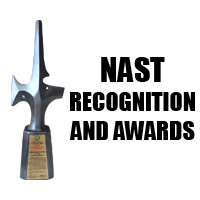Numerous issues have been raised in the on-going election campaign. Unfortunately, one of the most strategic issues facing the Philippines has not yet been addressed: the key role of science and technology in the Philippine development plan.
It is now clearly accepted that science, technology and innovation (STI) are a key elements in the advancement of a country. Indeed, there is no country that has progressed without including STI as a central part of their development plan. All progressive countries in the world have put STI as a centerpiece of their strategy. The Philippines has failed to do this. This national election must address this question and the new administration must correct this failure.
The Philippines faces multiple global and local challenges which require science, technology and innovation. These include:
- the intensifying competition from globalization and regional integration;
- natural disasters, environmental degradation and climate change;
- and persistent poverty and increasing inequality.
Without STI: we will not be competitive; we will continue to suffer great damage from natural disasters, environmental degradation and climate change; and we will continue to be poor.
How the Philippines responds to these challenges will determine whether the country will experience rapid, inclusive and sustained growth and development or revert to the status of the economic laggard of the region which includes high-performing countries, such as Singapore, Thailand, Malaysia, Thailand, Vietnam, and China. (China, our giant neighbor, recently announced that it will increase its investment in science and technology over the next 5 years and cut red tape which hampers science and innovation).
Science, technology and innovation (STI) are an indispensable component of the response to our challenges. However, the Philippines is at present ill-prepared to cope with these challenges. We are not investing sufficient resources in science and technology (S&T) human resource development, research and development (R&D), and physical infrastructure. Today we lack even the minimum number of scientists and technologists needed for innovation-driven development. As a result, we suffer from low industrial and agricultural productivity, overall inefficiency, and a meager output of knowledge products, such as scientific publications, patents, and innovations. Where there are highly-trained scientists and technologists, there is not enough local investment to absorb them. Thus, we are engaged in an unwinnable effort to stem the exodus of our highly-trained professionals to countries that are able to provide them the material reward, productive working conditions, and social recognition that are denied them in own country.
Moreover, the S&T sector in particular, and Philippine society in general, are burdened by archaic legal, financial, and administrative rules and practices which stifle R&D, innovation and productivity, and have thus prevented STI from fulfilling its goals of poverty reduction and sustainable development. NAST therefore proposes the adoption of the following policies and/or programs:
Micro, Small and Medium Enterprises (MSMEs)
Facilitate access of MSMEs to advanced technologies and global markets. An industrial extension network should be established to assist and train MSMEs in using advanced technologies and accessing financing to produce higher valued products that can be marketed globally.
Agriculture
1. Agriculture has the greatest potential to solve urgent national problems, in particular, poverty, unemployment, overpopulation in the cities, poor health and nutrition, and environmental degradation. To achieve this, we propose a science-based, nature-inspired program that requires the following commitments from the national leadership:
2. Redirect agricultural production programs from single commodity (e.g., rice, livestock, fisheries) to a farming systems-oriented program. Replace rice sufficiency with food security as the primary national goal.
3. Restructure agricultural R&D, including education and extension services, to make them a catalyst for diversification, integration and intensification in the farms. Give the highest priority to applied biology and biotechnology, flexible machinery systems, and utilization of information technology.
4. Formulate innovative policies that promote coupling of mechanization with energy self-reliance in all steps of the value chain, using renewables and indigenous sources of energy.
5. Review highly restrictive regulations involving bioprospecting, biotechnology, information technology, and other components of modern technology.
6. Manage land and water resources to ensure food security and the protection of the environment.
7. Actively promote diversification in agricultural production to ensure food security and promote better nutritiotion.
8. Invest in the local production of agricultural inputs, such as high-value animal care products and machinery.
9. Adopt a whole industry approach to the coconut sector, which includes agricultural production, integrated processing, health research, biofuels, and oleochemicals.
Manufacturing
1. Manufacture higher-valued food and non-food products from agricultural raw materials. Manufacture higher-value products from our mineral resources.
2. Provide reliable and inexpensive power to industry and SMSEs.
3. Improve product quality, efficiency and productivity of the manufacturing sector by facilitating access to new developments in emerging technologies, such as biotechnology, information technology, materials science and nanotechnology.
4. Institute an industrial policy that promotes broad technologies rather than specific industries.
Health and Nutrition
1. Sustain policy and operational research to provide quality health care to all Filipinos.
2. Increase R&D support in the National Unified Health Research and Development Agenda for non-communicable diseases such as heart disease and hypertension, and diabetes, the neglected tropical diseases such as malaria, schistosomiasis and rabies; as well as emerging infectious diseases such as MERS-CoV and Zika.
3. Strengthen and improve the infrastructure for the surveillance and monitoring of diseases through efficient and updated case registries.
4. Upgrade the testing facilities for food and drug quality and safety that conform to global standards and ensure that these services are affordable and available in the regions where they are needed.
5. Train and provide tools to health workers to enable them to make prompt and appropriate diagnoses and treatment through point of care health products and technologies.
6. Promote health and nutrition by actively campaigning for diversified diet and requiring open spaces and parks, in communities and schools.
7. Intensify support for science-based herbal medicine.Services
8. Train human resources to gain national capacity to evaluate, build, repair and maintain civil infrastructure (roads, bridges, airports, seaports) according to global standards
9. Improve the national information infrastructure by installing a reliable and secure high-speed wide bandwidth internet system.
10. Provide IT access to remote communities.
11. Adopt measures and the technology to ensure a reliable and safe transportation system on land, sea and air; rehabilitate and expand the railway system.
Environment and Climate Change
1.Continue investments in R&D to develop a highly reliable early warning system and appropriate adaptation measures to address the effects of climate change and the increasing frequency of highly-damaging natural disasters.
2. Institute measures that balance development and environmental concerns and harness technological advances to deal with climate change, disaster risk reduction/management, biodiversity conservation especially in the mapping of: (a) pollution sources and risks; (b) vulnerable communities and ecosystems; and (c) land use and cover change.
3. Review, and if necessary revise, the elementary and high school curricula to include courses or modules on the environment, biodiversity and climate change, with emphasis on understanding the need for balancing these global concerns with national development goals.S&T Infrastructure and Governance
4. Increase R&D to GDP ratio, first to 1% and later to 2%, with government support being focused on technologies with the highest impact.
5. Revise rules and regulations on the procurement of scientific equipment and the auditing of S&T expenditures that hinder R&D and innovation to conform to the needs of R&D.
6. Designate and strengthen selected universities as a base for the establishment of discovery- innovation institutes or knowledge-innovation hubs.
7. Adopt more flexible hiring rules and compensation levels for highly-trained scientists and technologists.
8. Adopt a whole of government approach to Science, Technology and Innovation (STI) so that STI should be a top priority at the highest levels of policymaking.
Brain Drain and Science Education
1. Provide additional incentives for scientists and technologists. Over the long term, the aim should be not only to retain Filipino scientists and technologists but to attract back some of those who have left for greener pastures abroad.
2. Improve the work environment of Filipino scientists and technologists to ensure that policies, procedures, and institutions’ practices are conducive to scientific knowledge production comparable to the more technologically advanced countries in the region.
3. Adopt measures to attract the best and the brightest to pursue undergraduate, graduate and post-graduate programs in S&T. The Philippines needs to graduate at least 3,000 new PhDs each year for the next 10 years in order to meet UNESCO’s critical threshold comparable to the more technologically advanced or progressive countries in the region.
4. Formulate appropriate government hiring rules in order to make it easier for public and private universities and research institutes to create new research positions, starting with designated research universities.
5. Develop regional and global academic linkages.
6. Strengthen the provisions and support for mathematics and science education at the basic education level (K to 12), adapting to local schools the standards and best practices in more technologically advanced or progressive countries in the region.
These proposed policies, programs or projects, though separate, are mutually supportive and reinforcing. Individually and collectively, they promote inclusive growth and sustainable development. They are also, in our view, doable within the six-year term of the President.
Submitted by:
The National Academy of Science and Technology Philippines
18 March 2016
18 March 2016











